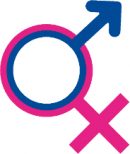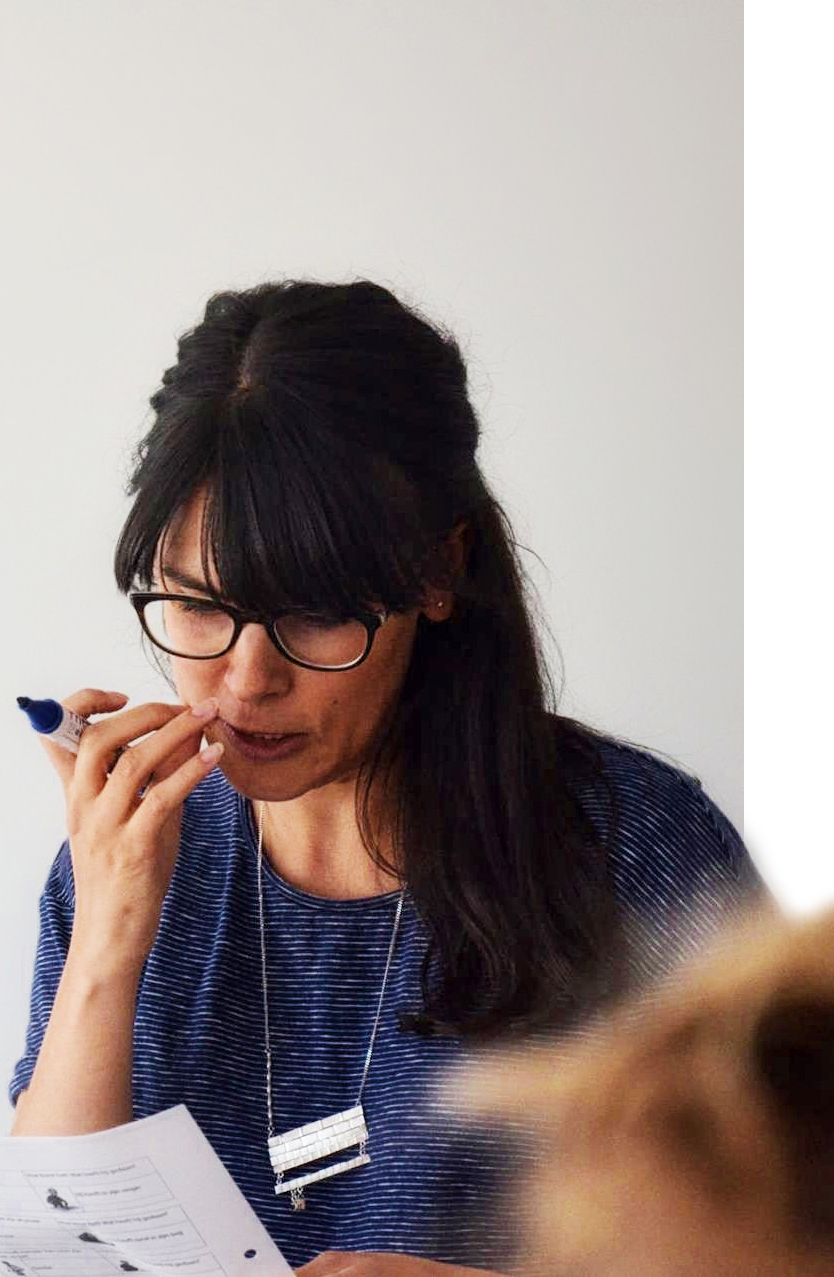PLOTINA LEXICON
Gender Equality
Gender equality is the result of the absence of discrimination on the basis of a person’s gender in opportunities and the allocation of resources or benefits or in access to services
(EC, Strategy for equality between women and men 2010-2015, amended)
Gender Equity
Fairness of treatment for women and men, according to their respective needs and interests. This may include equal treatment or treatment that is different but considered equivalent in terms of rights, benefits, obligations and opportunities.
(International Labour Organisation)
The highlighted definition was preferred by most partners because it was considered more straightforward and easier to understand.
Work-Life Balance/Work and Personal Life Integration
Work and Personal Life Integration:
Work is part of life, and therefore to see it in terms of a work/life interface is misleading; and ‘Personal life’ captures the range of commitments and duties which an individual may have, and which can vary across the life course, while still allowing family to be a large part of personal life for most people.
(ILO report –Fagan et al., 2012)
(International Labour Organisation)
Culture/Organisational Culture
Culture consists of patterns, explicit and implicit, of and for behaviour acquired and transmitted by symbols, constituting the distinctive achievements of human groups, including their embodiment in artifacts; the essential core of culture consists of traditional (i.e. historically derived and selected) ideas and especially their attached values; culture systems may, on the one hand, be considered as products of action, on the other, as conditional elements of future action.
(Kroeber & Kluckhohn 1952: 181; cited by Adler 1997: 14)
[Anthropological]
Organizational culture is a set of shared mental and implicit assumptions that guide interpretation and action in organizations by defining appropriate behavior for various situations.
(Ravasi and Schultz, 2006, amended)
[Organisation Studies]
The Consortium agreed to include both definitions because they would be both useful for this project since definition 1 comes from an anthropology perspective and definition 2 from an organisation studies’ perspective. They were both endorsed by the Consortium.
We added implicit to the mental assumptions in the organizational culture definition to reflect the potential implicit assumptions that individuals have.


Sex
Sex is a biological quality or classification of sexually-reproducing organisms, generally female, male, and/or intersex, according to functions that derive from the chromosomal complement, reproductive organs, or specific hormones or environmental factors that affect the expression of phenotypic traits that are strongly associated with females or males within a given species
We have added the definition from EIGE of sex referring to biological characteristics (asreal/material) because it can be useful for recognising biological similarities and oppression. At the same time though, we are aware of the debate and the risks about such a definition in relation to the homogeneity of such divisions and gender conditioning. While we consider that sex and gender are mutually constitutive for practical terms and for the purposes of our project, we distinguish between them to enable us in the collection of empirical data and develop gender equality plans to enhance representation and diversity at all levels in research performing organisations. Furthermore, this broad definition is useful for PLOTINA since one of its objectives is the integration of sex and gender variables in research (with a focus on disciplines that have not been traditionally integrated such as biology, zoology etc).
For a comprehensive account on feminist perspectives on sex and gender:
Gender
Gender —a socio-cultural process— refers to cultural and social attitudes that together shape and sanction “feminine” and “masculine” behaviors, products, technologies, environments, and knowledges. “Feminine” and “masculine” describe attitudes and behaviors on a continuum of gender identities. Gender does not necessarily match sex.
Gender Identity
An individual’s internal sense of gender, which may or may not be the same as one’s gender assigned at birth. Some gender identities are “woman,” “transman” and “agender” but there are many more. Gender identities refer to how individuals and groups perceive and present themselves, and how they are perceived by others. Gender identities are context-specific.
(Adapted, see notes)
Gender Roles
Gender roles are learned behaviours in a given society, community or other social group. They condition which activities, tasks and responsibilities are perceived as appropriate to males and females respectively. Gender roles are affected by age, socio-economic class, race/ethnicity, religion, and the geographical, economic, political and cultural environment.
Stereotypes
A stereotype is a widely held, simplified, and essentialist belief about a specific group. Groups are often stereotyped on the basis of sex, gender identity, race and ethnicity, nationality, age, socioeconomic status, language, and so forth. Stereotypes are deeply embedded within social institutions and wider culture. They are used to justify and maintain the historical relations of power. They are often evident even during the early stages of childhood, influencing and shaping how people interact with each other.
(Gendered Innovations Website – amended, see notes)


Gender Mainstreaming
Gender mainstreaming is the (re)organisation, improvement, development and evaluation of policy processes, so that a gender equality perspective is incorporated in all policies at all levels and all stages, by the actors normally involved in policy-making.
(Council of Europe, 1998)
Gender dimension (in research, in relation to WP4)
Gender dimension means integrating sex and gender analysis into research […] integrating into all phases of basic and applied research—from setting priorities, to funding decisions, to establishing project objectives and methodologies, to data gathering, analyzing results, and evaluation.
Femininities and Masculinities
“Femininities” and “masculinities” describe gender identities. They describe socio-cultural categories in everyday language; these terms are used differently in biology (see below). Because femininities and masculinities are gender identities, they are shaped by socio-cultural processes, not biology (and should not be essentialized). Femininities and masculinities are plural and dynamic; they change with culture and with individuals.
Gender Balance
Gender balance is commonly used in reference to human resources and equal participation of women and men in all areas of work, projects or programmes. In a scenario of gender equality, women and men are expected to participate proportionally to their share of the population. In many areas, however, women participate less than what would be expected based on the sex distribution in the population (underrepresentation of women), while men participate more than expected (overrepresentation of men).
(Original Source: United Nations Statistics Division – UNSD. Global Gender Statistics Programme; Secondary Source: EIGE)
Gender Equality Plan (GEP)
A Gender Equality Plan (GEP) is a set of actions aiming at achieving gender equality in an organisation. The GEP is often the result of the following phases:
- An analysis phase, in which sex-disaggregated data is collected; procedures, processes and practices are critically assessed with a view to detect gender inequalities and gender bias;
- A planning phase, in which objectives are defined, targets are set, actions and measures to remedy the identified problems are decided, resources and responsibilities are attributed and timelines are agreed upon;
- An implementation phase, in which activities are implemented and outreach efforts are undertaken so as to gradually expand the network of stakeholders;
- A monitoring phase, in which the process and the progress are regularly followed through and assessed. Findings from the monitoring exercise(s) allow to adjust and to improve interventions, so that their results can be optimised.
Therefore, a GEP is comprised of actions which aim to address issues related to gender equality identified through the abovementioned phases. It is thus tailored to the specific organisation it refers to. GEPs should be organic documents, constantly reviewed and updated.
(Adapted from EIGE website based on EC document and ECU’s handbooks of Athena SWAN)
Sexual harassment
Sexual harassment is a form of gender-based violence encompassing acts of unwanted physical, verbal or non-verbal conduct of a sexual nature, which have a purpose or effect of violating the victim’s dignity and creating an intimidating, hostile, degrading, humiliating or offensive environment.
Acts of sexual harassment are, typically, carried out in the context of abuse of power, promise of reward or threat of reprisal.
(EIGE)
Care
Care work may be very broadly defined as the work of looking after the physical, psychological, emotional and developmental needs of one or more other person(s). Care recipients are generally identified as infants, school-age children, people who are ill, persons with a disability, and elderly people.
Care providers typically include public and private health services, state-regulated or public-sector social workers, public or private care-provider agencies, enterprises of employment, voluntary and community organisations, faith-based organisations or networks, and relatives and friends. Different settings and modalities of care work apply to each of these categories.
(Original Source: International Labour Organization – ILO (2007). ABC of Women Workers’ Rights and Gender Equality.) –Secondary Source: EIGE)
How care is related to the achievement of equality. The lack of affordable, accessible and high quality care services and the fact that care work is not equally shared between women and men have a direct negative impact on women’s ability to participate in all aspects of social, economic, cultural and political life.
How care is often unpaid andthe responsibility of informal care work may have a major impact on their health and well being of those who take responsibility for it. Informal care is largely invisible and the economic and social contributions of carers unacknowledged. It is estimated that over 75% of informal carers worldwide are women which brings a disproportionate burden on that part of our population.
Family responsibilities
Family responsibilities cover the care of, and support for, dependent children and other members of the immediate family who need help.
Women continue to shoulder a disproportionate share of the burden when it comes to raising children and taking care of other dependants. This fact impacts their employment, from taking on leadership roles through to retirement. It also restricts their entering, participating in or advancing in a broad range of public, political or cultural areas.
(EIGE)
Empowerment
Describes both the process and the outcome of people – women and men – taking control over their lives: setting their own agendas, gaining skills (or having their own skills and knowledge recognized), increasing self-confidence, solving problems, and developing self- reliance. Empowerment implies an expansion in person’s ability to make strategic life choices in a context where this ability was previously denied to them. In most cases, the empowerment of women requires transformation of the division of labour and of society.
(Source: Kabeer, Naila. “Reflections on the Measurement of Women’s Empowerment”, in Discussing Women’s Empowerment: Theory and Practice. Stockholm: Sida Studies No. 3, 2001)
Intersectionality
In relation to gender equality, intersectionality is an analytical tool for studying, understanding and responding to the ways in which sex and gender intersect with other personal characteristics/identities, and how these intersections contribute to unique experiences of discrimination. It starts from the premise that people live multiple, layered identities derived from social relations, history and the operation of structures of power. Intersectional analysis aims to reveal multiple identities, exposing the different types of intersectional and multiple discrimination and disadvantage that occur as a consequence of the combination of identities and the intersection of sex and gender with other grounds.
(EIGE- Glossary)
“The view that women experience oppression in varying configurations and in varying degrees of intensity. Cultural patterns of oppression are not only interrelated, but are bound together and influenced by the intersectional systems of society. Examples of this include race, gender, class, ability, and ethnicity.” (Collins, 2002, p.42)

